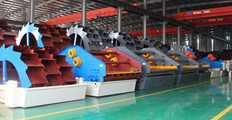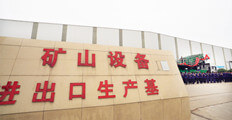Waste incineration power station slag screening metal recovery process
If you are interested in our products, Please get in contact with us .
E-mail: export@lylzzg.com Chat Line Send InquiryWaste incineration, as an effective means of waste reduction, harmlessness and recycling, is to reduce the volume of waste through oxidation at high temperature through appropriate thermal decomposition, combustion, melting and other reactions, and become residue or molten solid matter. Process. After waste incineration, 20% to 25% of the slag will be produced.
The timely and stable consumption of slag has become the key to ensure the smooth operation of waste incineration power generation projects. Slag treatment mainly uses the differences between the physical properties of ash components to carry out crushing, screening, impurity removal, magnetic separation, non-ferrous metal separation, precious metal separation, resource treatment and other links to achieve iron, copper, zinc, etc. The recovery of valuable metals, the preparation of recycled blocks from the sorted slag.

Waste incinerator slag treatment process
1. Crushing: The slag is fed to the silo with grille by the forklift, and conveyed to the crusher by the belt for crushing. The crusher can fully crush the slag, stones, concrete and other hard substances in the slag into the specified particle size.
2. Screening: The crushed slag enters the multi-layer screen, and is screened into several specifications of different particle sizes under high frequency vibration.
3. Magnetic separation: high-frequency sieve followed by magnetic separator, slag of different specifications enters different magnetic separators, and large pieces of scrap iron are selected.
4. Flotation: The slag after the secondary magnetic separation and sorting enters the jig, and the ascending water flow is faster than the descending water flow, so that the heavy particulate matter in the slag is fully settled. Therefore, the metal particles with heavier specific gravity settle to the bottom of the jig with the descending water flow; the material with lighter specific gravity is discharged through the discharge port with the upper water flow, and enters the recycling machine for fine material recovery.
5. Shaker: The fine materials recovered by the recycling machine enter the shaker for selection.
6. Cleaning and dehydration: The large-particle slag after flotation continues to be screened, magnetically separated, and then enters the sand washing machine for cleaning, dehydration, and conveyed to the finished product pile by the conveyor belt.
7. Solid-liquid separation: At the same time, the sludge-water suspension treated by the separator is discharged into the sewage tank, and then the tail water is pumped from the sewage tank into the filter tank by the pump to carry out the mud-water separation operation. After the filter tank processes about 80% of the tail water into clean water, it enters the clean water tank directly from the overflow port.
8. Sludge dewatering: the concentrated mud is pumped into the plate and frame filter press through the bottom of the filter tank, and the filter press presses the concentrated mud into a mud cake to achieve dry heap, landfill or develop other uses. After pressure filtration, the clean water enters the clean water tank to realize the recycling of clean water and zero discharge of the whole process.
Send us a message
You can also send a message to us by this email export@lylzzg.com, we will reply to you within 24 hours. Now tell us your needs, there will be more favorable prices!


